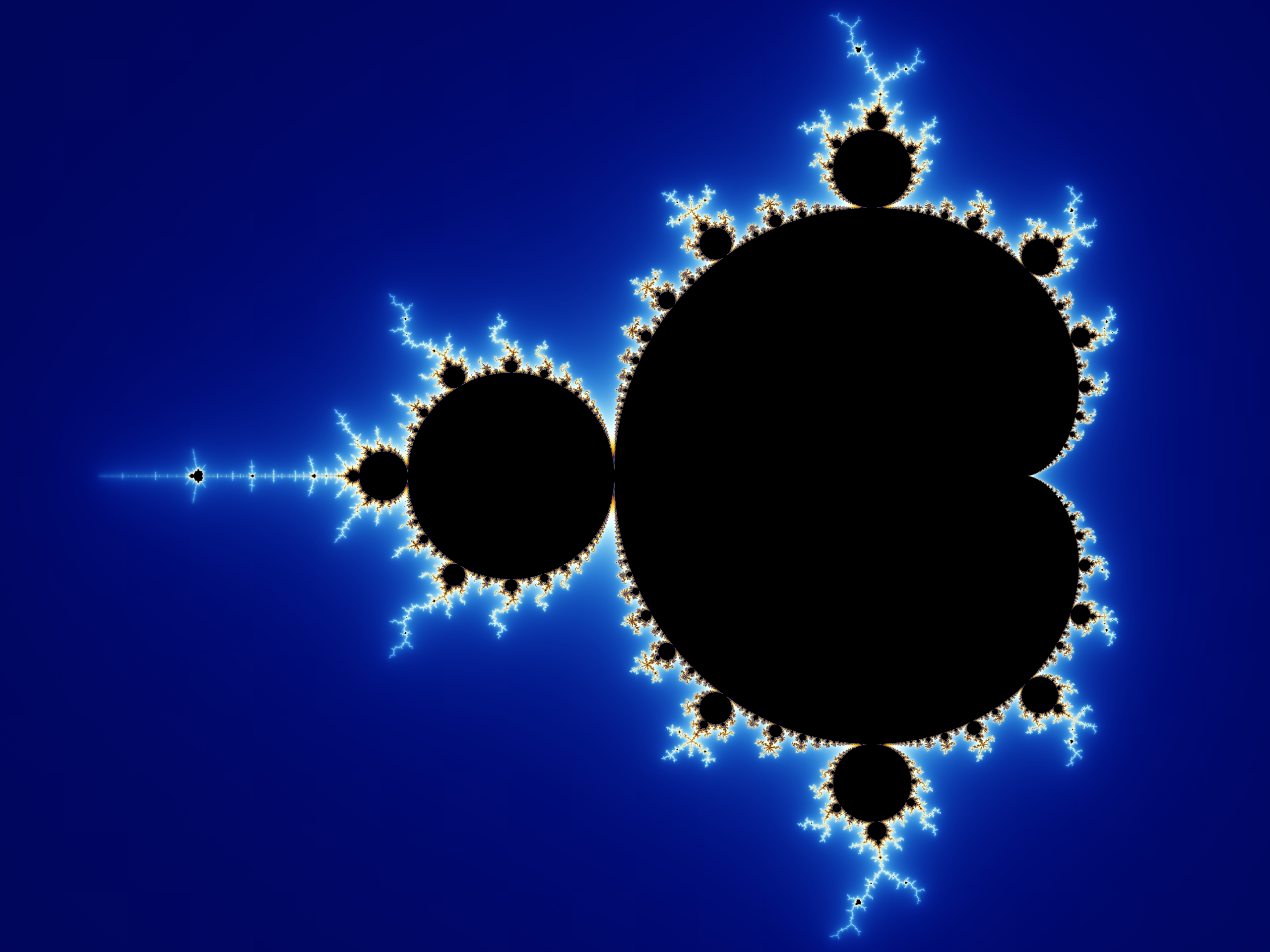Julia Set

In the context of complex dynamics, a topic of mathematics, the Julia set and the Fatou set are two complementary sets (Julia "laces" and Fatou "dusts") defined from a function. Informally, the Fatou set of the function consists of values with the property that all nearby values behave similarly under repeated iteration of the function, and the Julia set consists of values such that an arbitrarily small perturbation can cause drastic changes in the sequence of iterated function values. Thus the behavior of the function on the Fatou set is "regular", while on the Julia set its behavior is "chaotic".
The Julia set of a function f is commonly denoted J(f), and the Fatou set is denoted F(f). These sets are named after the French mathematicians Gaston Julia and Pierre Fatou whose work began the study of complex dynamics during the early 20th century.
Source: Wikipedia
Mandelbrot Set

The Mandelbrot set is the set of complex numbers c for which the function
fc(z) = z2 + c
doesn't diverge when iterated from z = 0, i.e., for which the sequence
fc(0), fc(fc(0)), etc., remains bounded in absolute value.
Its definition and name are due to Adrien Douady, in tribute to the mathematician Benoit Mandelbrot. The set is connected to a Julia set, and related Julia sets produce similarly complex fractal shapes.
Mandelbrot set images may be created by sampling the complex numbers and testing, for each sample point c, whether the sequence
fc(0), fc(fc(0)), ... goes to infinity (in practice, whether it leaves some predetermined bounded neighborhood of 0 after a predetermined number of iterations).
Treating the real and imaginary parts of c as image coordinates on the complex plane, pixels may then be coloured according to how soon the sequence
|fc(0)|, |fc(fc(0))|, ... crosses an arbitrarily chosen threshold, with a special color (usually black) used for the values of c for which the sequence hasn't crossed the threshold after the predetermined number of iterations (this is necessary to clearly distinguish the Mandelbrot set image from the image of its complement). If c is held constant and the initial value of z (denoted by z0) is variable instead, one obtains the corresponding Julia set for each point c in the parameter space of the simple function.
Images of the Mandelbrot set exhibit an elaborate and infinitely complicated boundary that reveals progressively ever-finer recursive detail at increasing magnifications. The "style" of this repeating detail depends on the region of the set being examined. The set's boundary also incorporates smaller versions of the main shape, so the fractal property of self-similarity applies to the entire set, and not just to its parts.
The Mandelbrot set has become popular outside mathematics both for its aesthetic appeal and as an example of a complex structure arising from the application of simple rules. It's one of the best-known examples of mathematical visualization and mathematical beauty.
Source: Wikipedia

